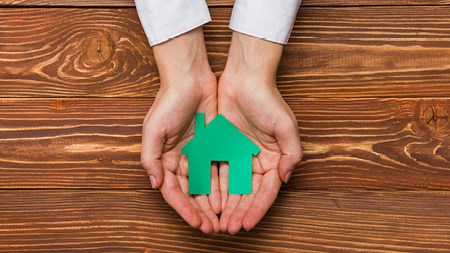South Africa's construction industry is going green with energy-efficiency building regulations having come into effect in November last year, which are aimed at boosting green architecture.
From December 2011, all new buildings were required to use solar water heaters, heat pumps or similar technologies, while ceilings, walls and windows should now meet minimum requirements in terms of insulation. Buildings should also be fitted with energy-efficient heating, air conditioning and mechanical ventilation systems.
The regulations apply to all new energy-consuming structures in which people live or work, such as government buildings, social housing, schools, office buildings and hospitals. Local authorities will be responsible for the administration of the regulations and on-site inspections.
These regulations are defined in the South African Bureau of Standards’ SANS 10400 XA standard, and are enforceable in terms of the National Building Regulations and Building Standards Act.
Lisa Reynolds, chair of the working group that developed the standards, says that the regulations will not be compulsory yet as their stipulations are rigorous in terms of methods and materials used. Instead, she says that it is the standard that the country will be working towards over the next eight to 10 years – at which time there will be no exceptions.
All of this sounds abfab but the property investors are asking how these regulations affect their portfolios.
Well, a report from the Green Building Council of South Africa entitled Rands and Sense of Green Buildings delves into the issue of going green, driving home the compelling business case for green building. The report contains evidence-based studies on the costs and benefits, including the investment potential, of green building in countries with established green building markets such as the US and Australia.
Results from studies referred to in the report have shown that there is no significant cost difference between the construction of green buildings compared with conventional buildings, and green buildings achieve better investment returns and higher valuations.
Ah, say the investors, we’re starting to talk money.
A common misperception is that building green can add as much as 17 percent capital cost to a project. The Rands and Sense of Green Buildings report shows that this is not the case, with the majority of reported premiums in the US holding between zero and four percent.
In Australia, the latest studies show that a 4 Star Green Star building is actually cheaper to build, while a 6 Star Green Star building – signifying world leadership – usually has a relatively small premium of about six percent.
The comparative immaturity of the South African green building market means that there have not yet been any broad empirical studies on the capital cost impacts of green building locally. However, the local case studies documented in Rands and Sense of Green Buildings show that the South African property industry can expect cost premiums of a new commercial green building to be between one and 10 percent.
In young green building markets like South Africa, sustainable buildings generally incur a green premium above the cost of standard construction. However, once these markets mature and green building materials and practices become more prevalent – and indeed in higher demand – these “new market premiums” will decrease and green building can be done at similar costs to conventional builds.
Rands and Sense of Green Buildings author Nicola Milne says that, while there seems to be consensus on the environmental benefits of green buildings, there is a lack of accurate, thorough financial and economic supporting information. The report does, however, highlight the financial and environmental benefits of green building, such as lower operating costs owing to savings on energy and water in particular, higher returns on assets and increased property values based on the lower operating costs.
Green buildings are therefore viewed as less risky, future-proofed buildings that can fetch lease premiums and retain tenants for longer than conventional buildings. Other benefits include the enhanced marketability of a green building, as it is a technologically advanced, environmentally and socially responsible building representing a differentiated product in the market.
Milne notes that green buildings represent responsible investing and reduced liability and risk because developers are cognisant of, and guard against, increasing utility costs and supply constraints, as well as being mindful of possible carbon taxes and potential mandatory energy performance disclosure and broader regulation.
However, valuation is an issue that will still have to be overcome. The valuation industry relies on past evidence of sales prices to determine the appropriate capitalisation rates to use when valuing a property. Until there are a greater number of rated green buildings in South Africa that have been transacted, the full benefits of green buildings may not be reflected in their valuations.


